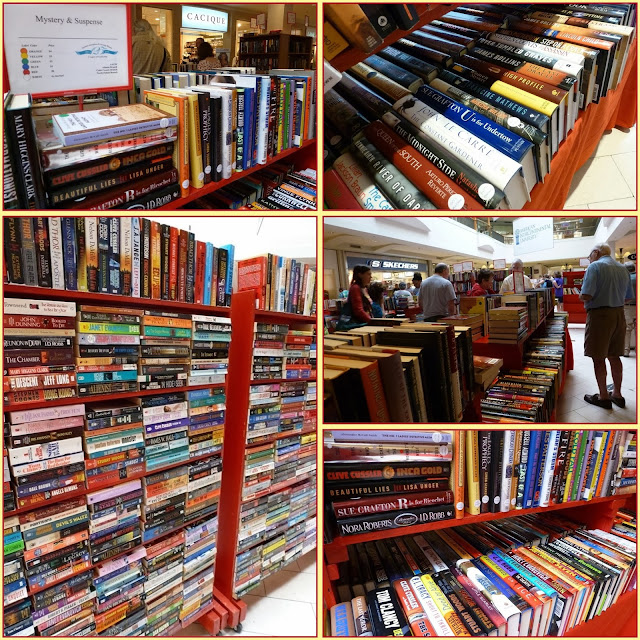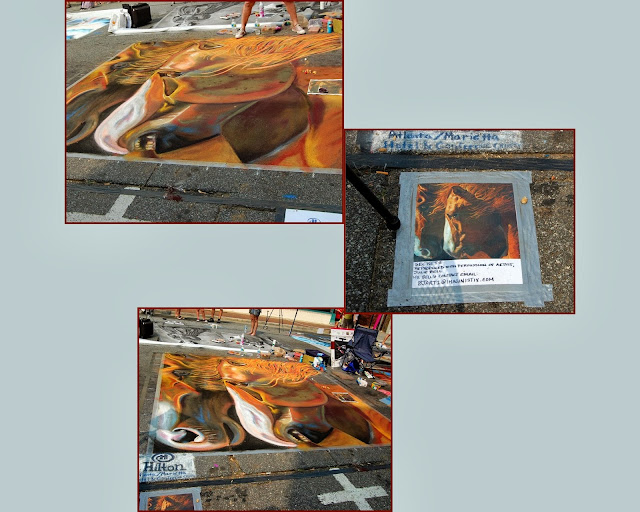The song had been written by Steve Gooman and recorded by him in 1971. Steve wrote the song in 1970 aboard the Illinois Central train when he and his wife Nancy were going to visit his wife's grandmother. Steve described what he saw while on the train and when he came back home he found out that the train was scheduled to be removed from service because of lack of passengers. He released the song to help save the train. At about that time Steve Goodman was diagnosed with leukemia so he approached Arlo Guthrie at the Quiet Knight, a bar in Chicago, and asked Guthrie to include the song in his repertoire. Goodman was hoping that the song would become successful and provide money for his wife after his death - he died in 1984. The song became a hit for Guthrie but also for Willie Nelson who recorded it in 1984. Willie's version reached #1 on the Billboard Hot Country Single. Below is Steve Goodman singing his version of The City of New Orleans.
A couple of years ago I bought a book for my grandsons called "The Train they Call the City of New Orleans" showing Goodman's lyrics and illustrated by Michael McCurdy. My grandsons love trains and I thought they would like this book - they did. The book contains all the lyrics and shows the stops on the train journey to New Orleans. Click on collages twice to enlarge and see better.
Here is the famous refrain -
Good Morning America, how are you?
Say don't you know me, I'm your native son
I'm the train they call the City of New Orleans
I'll be gone five-hundred miles when the day is done
Fast forward about 4 months ago. Our daughter who moved from Long Beach, California, and now lives in Memphis, Tennessee, asked us to come for a visit in the fall. While I was looking at the calendar and making plans for the trip to Memphis I heard a song in the background and it said "Memphis, Tennessee" - it was The City of New Orleans song.
I stopped and thought "can this train still be running?" and I quickly checked with Amtrak. It is. It seems that the train called City of New Orleans, which had been introduced in 1947 by the Illinois Central Railway, was now part of the Amtrak passenger system and still doing the Chicago to New Orleans run. Then I checked the timetable from Memphis to New Orleans and back, the price, rooms in New Orleans and also found a discounted cruise from New Orleans. It all worked out and this is how we came to board the City of New Orleans from the Memphis Central Station on October 3rd, 2013. We arrived at around 6:00 am for our 6:50 am departure. I did not take pictures outside the station as it was still dark but below are some old postcards showing the station in 1910 and later, as it is still now, the vintage Illinois Central City of New Orleans train and the other side of the station, near the single track.
There were less than a dozen people waiting for the Amtrak Superliner train. Such a big station for a single train, coming twice a day - in the morning from Chicago to New Orleans, and in the evening arriving from New Orleans and going to Chicago - just those trains, that's all. I was a bit amazed, really. I took so many trains in France, to high school every day, to Normandy or Brittany, to England, to the Riviera or Italy or Switzerland, to Belgium and the stations were always so crowded with trains arriving and departing constantly - but the Memphis station was quiet. Memphis is the largest city in the state of Tennessee with approximately 656,000 inhabitants. I went outside and took some pictures.
The train arrived on time, around 6:25 am.
I had booked a "roomette" as meals are included, free of charge. There were 2 seats, which could be extended. Roomette shown below and the indoor corridor.
The train pulled away from Memphis as the sun was rising. The conductor announced that we could go to the Dining Car for breakfast as soon as we were away from Memphis.
As we ate our breakfast (eggs, bacon, multigrain biscuits, grits for me but potatoes for my husband, coffee and orange juice) the sun was getting brighter and the scenery was sharper, but the train was shaking a lot and as we went back to our seat we had to hold on to whatever we could. Later the conductor told us that the tracks were used mainly by freight trains. They damage the tracks which have to be constantly repaired. Our first stop was in Greenwood, Mississippi - a 15 minutes stop.
The landscape was rural with fields, farms and small towns.
A City of New Orleans Route Guide was given to us. It showed the train route and gave information on the points of interest. The entry for Greenwood said "Greenwood has a reputation as a cotton producer dating back to pre-Civil War times. Today, its historic downtown boasts upscale shops, antique shops ... and it has retained a small-town, Deep South hospitality. Florewood River Plantation State Park is the recreation of a 1850 antebellum cotton plantation."
Our next stop was Yazoo City, Mississippi. The Route Guide said that it is known as the place where "The Delta meets the Hills" with the Panther Swamp Wildlife Refuge nearby. Yazoo City was the main location for the book and the movie My Dog Skip.
Our next stop, Jackson, was going to be a "smoking" stop (the train is non smoking) so it was a bit longer. Jackson is the capital of Mississippi. It was originally named LeFleur's Bluff but was changed in honor of Andrew Jackson. It was invaded three times during the Civil War and burnt to the ground. It sits on an extinct volcano. The gold dome of the state capitol was built in 1903 and resembles the nation's capitol in Washington, DC. We stepped down from the train and I took pictures of the capitol behind some fencing and then walked a bit further. There was not much traffic in Jackson in that part of town, but many birds were perched on the electric line above.
My husband walked in the other direction toward the back of the train.
We re-boarded the train and went toward the Sightseeing Lounge Car. It was very light but there was too much reflection from the panoramic windows for my picture taking. The train stopped in Brookhaven, Mississippi, but just for a short time. I asked someone to take our picture but at that moment the train started again with a bump and it made the camera move ...
As we approached the town of McComb, Mississippi, it was time to return to the Dining Car for lunch. McComb enjoys the distinction of being the "Camellia City of America," with the largest variety in the US of this flower. A gentleman from Christchurch, New Zealand (he is in the center of the collage below) came and sat at our table and we talked with him as the train was rolling along small towns and fields.
He said he was surprised to see such many houses that were crumbling or without roofs or boarded up. He added that in New Zealand these houses would have been condemned as a health hazard and destroyed. I replied that I had seen an article stating that Mississippi had the lowest per capita income in the US and the highest percentage of people living below the poverty level (37% of the population is African-American) so many lived in these houses. The state has the highest percentage of infant mortality, deaths from cardiovascular diseases and diabetes in the US - it also ranks 51st (after the District of Columbia) for life expectancy (below Vietnam and Jamaica and the same as Albania, Lebanon and Jordan.) Mississippi ranks dead last in national health care and is on par with many developing countries for diseases.
The state is also one of the most conservative in the country where anti-abortion is very strong and a priority - there is only one clinic left out of fourteen and the Governor is trying to close it and even trying to criminalize miscarriages and stillbirths. The man from New Zealand shook his head and said that he could not understand all this in such a wealthy country as the US - why this insensitivity toward the poor he asked? I answered that this was a baffling subject and would take time to discuss and lunch was now almost over, so he listed the major sights to visit in New Zealand. A conductor stopped by and told us that starting after Hammond, Louisiana, the scenery would be beautiful. Already we were crossing a river.
Our ride in The City of New Orleans and back to Memphis ten days later took about 16 1/2 hours total (8 hours + each way) and I took over 350 photos. This post is getting long, so I'll finish it on my next post. More to come...





























































